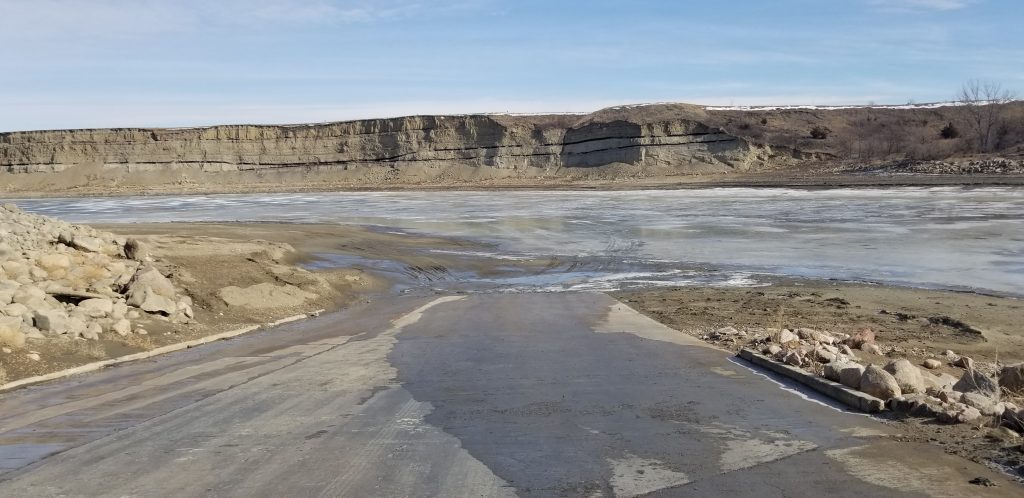

RIVERDALE — It has an ugly look to it, boat ramps on Lake Sakakawea ending in the mud or water too shallow to launch a boat. Adding to the low water woes is that there seems little likelihood of rescue by usual spring runoff to raise water levels.
There are several agencies responsible for boat ramps on Lake Sakakawea. Some are operated by the North Dakota Game and Fish Department, others by individual counties, or the U.S. Army Corps of Engineers. An example is Deepwater Bay south of Parshall where the Corps maintains the main ramp and the low water ramp. Game and Fish operates the intermediate ramp.
“It’s not too early to be thinking about access this year,” said Todd Lindquist, Corps project manager at Riverdale. “We’ve been looking at this since last November, compiling cost estimates required to maintain access. The Corps has 29 ramp locations on Lake Sakakawea.”
Some of those ramps are still under the water, low water ramps that were constructed in the early 2000s when Sakakawea sunk to some extremely low levels. While many of those ramps will be exposed, at least partially, when the current icepack melts, their immediate use is, at best, questionable. Lindquist emphasized that it is not “one size fits all” when it comes to low water ramps.
“There’s sand and silt drifting that will be problematic in a few locations,” said Lindquist. “Prevailing wind has a lot of impact on siltation. Some will have undercutting and require mud jacking and riprap. A big cost will be re-establishing access roads and parking areas.”
Popular Corps ramps include those at Douglas Bay, Wolf Creek, and Government Bay. All will be affected by low water levels. At Government Bay, which is situated near two large campgrounds and serves the busy Riverdale area on Lake Sakakawea, low water and silt problems are already evident with a thick ice cover still on the reservoir.
“Government Bay will take a lot of work to be able to get it open, but we will get it open,” stated Lindquist. “We’ve got the engineers and good operators.”
The need for boat ramp work is likely to be extensive all along Lake Sakakawea this spring. It comes with a cost too. In the case of the Corps of Engineers, they are hoping an omnibus spending bill making its way through Congress will contain money requested for boat ramp repair and maintenance at Fort Peck Reservoir in Montana, Lake Sakakawea, and Lake Oahe in both North and South Dakota.
“We definitely need some additional funding,” said Lindquist. “We can’t cover it all with my existing budget. We’re watching the runoff forecasts which have been trending down since the beginning of the year. In April we have to make decisions to move out and be ready.”
The March 13 mountain snowpack water content analysis issued by the Corps shows snowpack tracking 81-85% of normal, which would mean very little rise to alleviate boat ramp issued on Lake Sakakawea this summer.